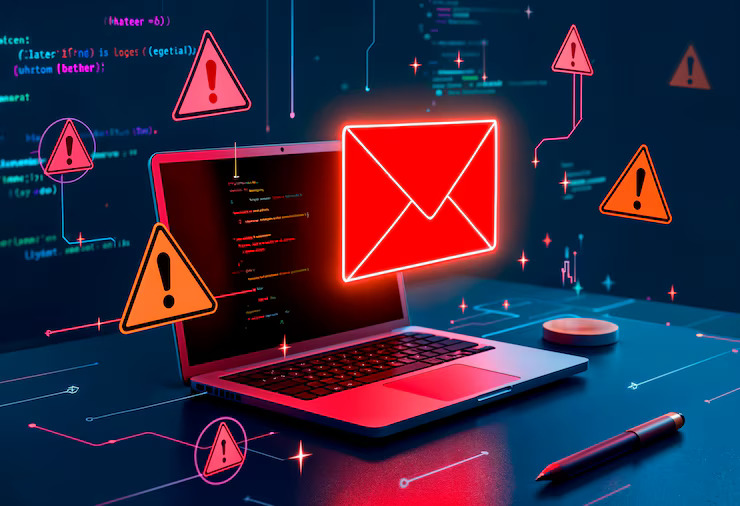In universities in Switzerland, where digital communication, coursework, and administration have become particularly well established, students spend a good deal of their academic life online. Emails are often involved in everything from registration to housing applications. But this convenience also has its price.
Increasingly, students are the targets of cybercriminals who send deceptive e-mails with viruses, phishing links, or hidden malware. One careless click, and valuable data could be stolen, money lost, or devices locked, all of which can cause major problems for students, particularly newcomers adjusting to a new system.
How Email Threats Target Students in the Digital Age
Does opening an email really endanger you? Sadly, yes. Modern email threats extend far beyond suspicious attachments. Nowadays, cybercriminals inject malicious code straight into the email content, buried in images, invisible text, or embedded scripts. Arguably, students are especially at risk because they tend to use laptops, phones, and tablets across both shared networks and public Wi-Fi. That makes it more difficult to spot the subtle warning signals, especially when emails look like official communications from universities, housing offices, or government bodies. For added security when accessing university resources over public Wi-Fi, using tools like Bitdefender VPN helps maintain privacy and protect your sensitive information from unauthorized access. That is why students need a credible resource that provides accurate information about staying informed and safe. Students should also access the latest tools, strategies, and information on the detection and prevention of all forms of email-based threats.
Another favorite target is international students. Since they might not know the language or the email format of local institutions very well, they may not identify a forged message as soon as possible and are more likely to engage with deceptive content.
Real-Life Consequences for the Students in Switzerland

An email attachment and its potential malware are not merely a technical problem. It can have real-world implications, whether that be academic or financial. Whether it is losing access to important portals or compromising your data, the effects can be disruptive.
Academic and Financial Setbacks
If the device is infected, the crucial files, platforms, or emails may be lost, which could result in a delay in coursework submission, an impediment to preparing for exams, or even not being able to log in for online assessments. Other applications of malware are used to deny access to university portals, which is an attack on academic progress.
Financially, compromised bank details or e-billing platforms can expose a student to fraud; for those who rely on regular transfers to pay rent, tuition, or health insurance, a delay or breach could lead to missed payments, a common provocative action, making email virus protection software that much more important.
Privacy Risks in Shared Environments
Most students in Switzerland reside in dorms, shared flats, or university houses, mostly using common networks or linked devices like printers and routers. If one student’s gadget is contaminated, the malware can easily propagate through shared folders, cloud platforms, or insecure Wi-fi.
This not only endangers others sharing the living space but also thwarts collaborative academic tools like shared drives or group project platforms. Once a single breach in such a communal environment occurs, the situation escalates with speed.
How to Recognize and Prevent Email Malware
When it comes to learning internet safety tips, you should know that avoiding email viruses always begins with building smart habits. Here, we discuss the red flags to pay attention to and some basic practices to follow through with.
Common Signs of a Dangerous Email
Fraud and phishing attempts have been the most common type of cyber threats prevalent in Switzerland in 2024. That is why implementing email security solutions is critical. Suspicious emails indeed bear some subtle (and sometimes not-so-subtle) red flags. These may come in the form of attached files one didn’t expect to receive, generic greetings, weird grammar, or addresses closely resembling the correct ones.
Urgency is another favorite tactic of malicious emails, threatening to ‘‘take away’’ something unless you act quickly. Students receive emails that seem like they are coming from Swiss housing offices, scholarship boards, or university staff; this is how scammers try to gain credibility.
Habits That Keep Your Inbox Safe

Turn on the spam filters in your email, make sure your antivirus is scanning all incoming emails and attachments, don’t click on unknown links, and be wary of file types such as .exe, .zip, or .bat.
Keep your operating system and your antivirus tools up to date so that you can close the gaps that the malware is trying to get through. Finally, most academic work of value can be encrypted on cloud storage or an external drive. This way, if a virus does still get through, at least your most important files are safe and can be accessed.
Final Thoughts
In such a highly digital academic environment as is witnessed in Switzerland, being completely careless with an email could result in dire consequences, from an academic delay to financial risk. Common signs of email threats are easily noted, and with the adoption of simple proactive habits, such as enabling spam filters, not opening unknown links, and keeping systems updated, students can protect not only their studies but also their data and peace of mind. Eventually, that moment of caution before clicking will save you from weeks of disruption.


